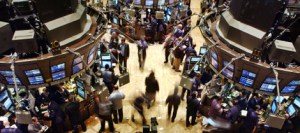Morning Briefing

March 8, 2023 | Daily JAM, Morning Briefing |
Private payrolls increased by 242,000 in February, according to the ADP National Employment Report. Economists surveyed by the Wall Street Journal had been looking for the economy to add 205,000 jobs in the month. The February increase was well above the revised January total of 119,000 new jobs. While the jobs report issued by the Bureau of Labor Statistics doesn’t always track closely to the ADP report, the stronger-than-expected new job total in today’s data certainly suggests that Friday’s official government report could also come in hotter than expected. Right now economists are looking for the economy to add 225,00 jobs in February according to the official data.

March 7, 2023 | Daily JAM, Morning Briefing |
As the day wore on, the stock market decided that it liked Federal Reserve Chair Jerome Powell’s Senate testimony less and less. The Standard & Poor’s 500 was down just 0.72% at 11 a.m. New York time. The index closed down 1.53% for the day.

March 6, 2023 | Daily JAM, Morning Briefing |
On Sunday at the National People’s Congress Premier Li Keqiang announced an “around 5%” target for China’s economic growth in 2023. That was slightly less aggressive than the “above 5%” that investors had hoped for. The policies surrounding the goal went relatively light on the traditional engine of infrastructure spending and focused instead on consumer-led growth.

March 3, 2023 | Daily JAM, Morning Briefing |
Yesterday, March 2, yields on all Treasury maturities closed above 4%. Today, that 4% level hasn’t held across all maturities with the 10-year Treasury yield dropping back to 3.96%, down 9 basis points, as of 3:00 p.m. But I think yesterday’s surge to a 4% yield for all maturities marks a milestone in this market–and the upward march of interest rates as the Federal Reserve shows signs of raising rates higher and longer.

March 2, 2023 | Daily JAM, Mid Term, Morning Briefing, TSLA |
Yesterday’s investors day could have been a huge positive that sent Tesla (TSLA) shares soaring today. Instead, because the company and its CEO Elon Musk once again over-promised and underdelivered, investors went away disappointed and today, March 2, the stock was down 5.85% at the close.

March 1, 2023 | Daily JAM, Morning Briefing |
The seasonally adjusted S&P Global US Manufacturing Purchasing Managers’ Index was revised lower to 47.3 in February. That’s up from a 46.9 reading in January. But it’s still below the 50-level that separates expansion from contraction in this index.

February 28, 2023 | Daily JAM, Mid Term, Morning Briefing |
The debt crisis at China’s local governments will be top of the agenda when China’s leaders gather in Beijing for the annual parliament next week.m (The nation’s legislators and top leaders meet from this Sunday to approve key economic targets for 2023, including a new local bond quota, the budget, and also monetary policy.) A majority of regional governments — at least 17 out of 31 — are facing a serious funding squeeze, with outstanding borrowing exceeding 120% of income in 2022

February 26, 2023 | Daily JAM, Morning Briefing |
Why hasn’t the stock market tumbled more in the wake of hotter-than-expected inflation numbers from both the Consumer Price Index (CPI) and the Personal Consumption Expenditures price index for January? It’s not because investors and traders are looking for a reversal of the bad inflation news when we get February data in early March. Nope. It’s because stock market bulls continue to believe that the Federal Reserve will stop raising interest rates soon enough to produce a rally in the second half of 2023.

February 26, 2023 | Daily JAM, Morning Briefing |
The so-called fear index, the CBOE S&P 500 Volatility Index (VIX), just isn’t very fearful right now. In spite of all the negative talk from Federal Reserve officials, Wall Street figures like JPMorgan Chase’s Jamie Dimon, and various and sundry economies, stocks just aren’t showing much fear right now. Oh, sure stocks fell this week but the VIX didn’t show any big rush to hedge downside risk

February 24, 2023 | Daily JAM, Morning Briefing |
The Personal Consumption Expenditures index, the Federal Reserve’s preferred inflation gauge, rose in January at its fastest pace since June. Consumer prices rose 0.6% from December to January, up sharply from a 0.2% increase from November to December, the Commerce Department reported on Friday, February 24. Year-over-year prices rose at a 5.4% rate, up from a 5.3% annual race in December. Core inflation, which excludes volatile energy and food prices, rose 0.6% from December, up from a 0.4% rise in December from Movember. Year-over-year core inflation was up 4.7% in January, versus a 4.6% year-over-year rate in December.

February 22, 2023 | Daily JAM, Morning Briefing |
Minutes from the Federal Reserve’s February 1 meeting show a central bank anticipating Federal Reserve further increases in interest rates in order to bring inflation down to the Fed’s 2% inflation target. “Participants observed that a restrictive policy stance would need to be maintained until the incoming data provided confidence that inflation was on a sustained downward path to 2%, which was likely to take some time,” according to the minutes of the February 1 meeting released today February 22.

February 21, 2023 | Daily JAM, Jubak Picks, Morning Briefing, WMT |
Today, February 21, Walmart (WMT) reported s 76% year-over-year jump in earnings to $1.71 a share. Wall Street analysts had forecast earnings of $1.52 a share for the fourth quarter. Revenue rose 7.3% to $164 billion. Comparable store sales gained 8.3%. All that pushed the company’s shares higher today with the stock up 0.59% at the close. But Walmart’s cautious guidance for the rest of 2023 helped send the general market lower.















